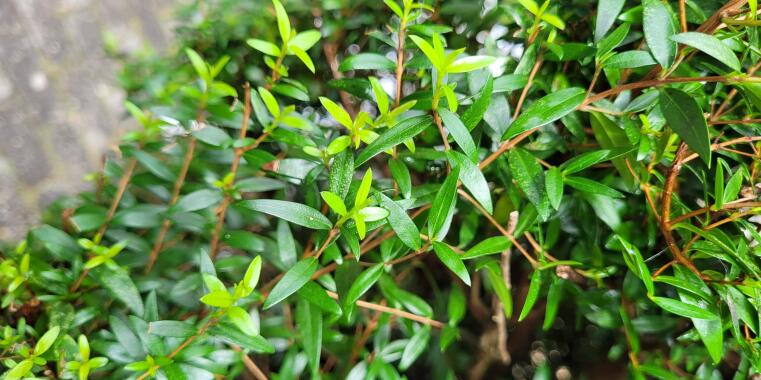

botanical details
order: Myrtales
family: Myrtaceae
genus: Myrtus
species: Myrtle (Myrtus communis)
attributes: evergreen shrub with essential oils, heigth up to five meters, many little, white flowers
origin: Mediterranean area up to Pakistan
habitat: introducted e.g. to Southafrica, California and Cuba
in the Bible
And on the second day the chief of the fathers of all the people, the priests, and the Levites, were gathered to Ezra the scribe, even to understand the words of the Law. And they found written in the Law which Jehovah had commanded by Moses, that the sons of Israel should dwell in booths in the feast of the seventh month, and that they should publish and proclaim in all their cities, and in Jerusalem, saying, Go forth to the mountain and bring olive branches and pine branches and myrtle branches and palm branches, and branches of thick trees, to make booths, as it is written. And the people went out and brought in, and made themselves booths, each one upon his roof, and in their courts, and in the courts of the house of God, and in the street of the Water Gate, and in the street of the Gate of Ephraim.
Nehemia 8, 13-16
In Jesaja 41,17-20 it is stated that God will let water flow in the desert and plant seven species of trees, which are notably all not fruit trees. Cedar, acacia, Aleppo pine, juniper, cypress, ulm and the fragrant myrtle are mentioned.
This composition of trees from the Syrian-Palestine region is difficult to explain. The acacia for example is a desert tree and thus nothing special considering the setting of the story. The other trees are large trees native to the woods of Libanon, where Myrtle can grow in a height of up to 1000 meters. The Gilgamesch-Epos mentions Myrtle in verse 154 as part of a cedar wood protected by Humbaba. The enumeration associates the desert with the dignity of the Libanon forest. According to U. Berges the trees were chosen owing to the exclusiveness of their wood, which was used for the construction of the temple, the tabernacle and various cult objects.
The Hebrew word for myrtle is הֲדַס.
In other cultures myrtle has a strong symbolic meaning, too. In ancient Greece it was the plant associated with the deity of love, Aphrodite. It represented virginity, vigor and love beyond death. The Romans adopted the idea and furnished their brides with twigs of myrtle.In early modern times and in some families until today a twig from the bride‘s myrtle is planted in the new family‘s home, which highlights the positive connotation of myrtle from biblical times until today.
mention: six times
(only in texts written during or after exile)
other text passages (selected):
Isaiah 41, 19
Isaiah 55,13
Sacharja 1,8.10.11
Nehemia 8,15
Sources
Berges, U., 2008, Jesaja 40-48 (HThK.AT), Freiburg i.Br.
Neumann-Gorsolke, Ute: Myrte, in: Das wissenschaftliche Bibellexikon (März 2015), URL: https://www.bibelwissenschaft.de/wibilex/das-bibellexikon/lexikon/sachwort/anzeigen/details/myrte/ch/4c183a9d3aa8f99084a7c5a80ad92016/ (abgerufen am 23.05.2023).
Modern King James Version.



